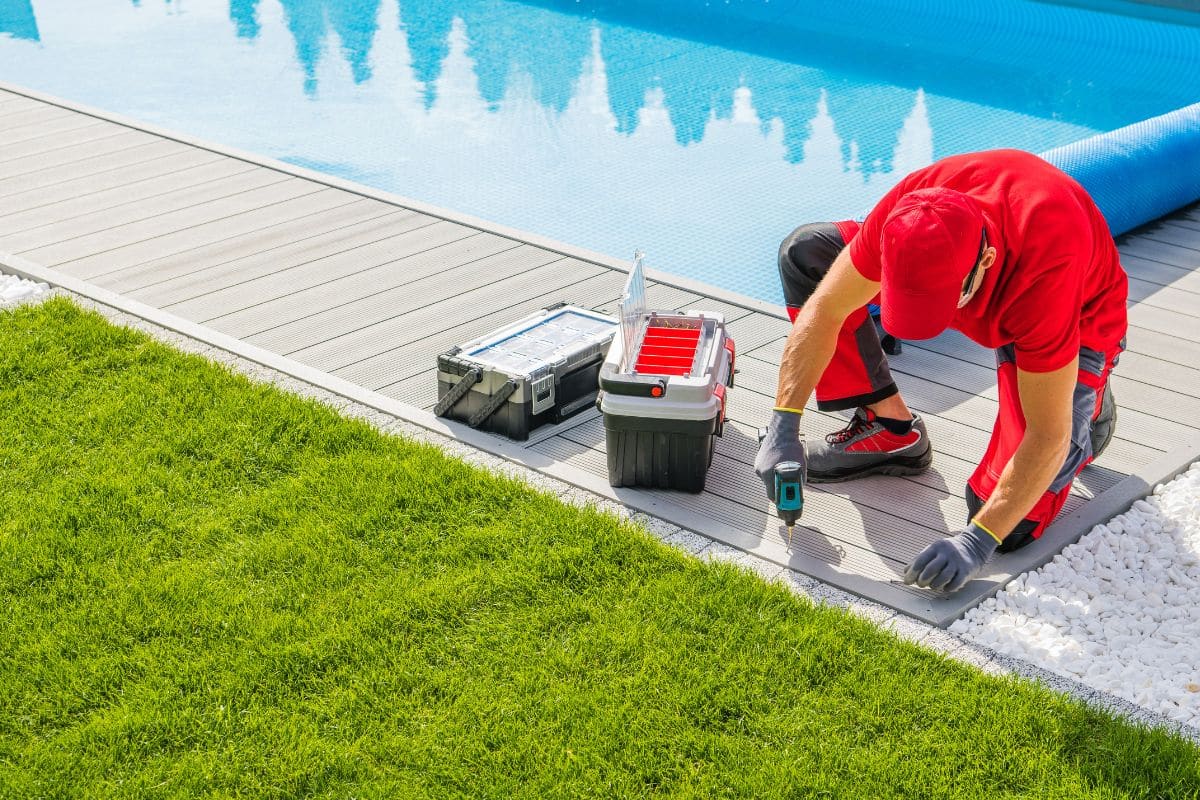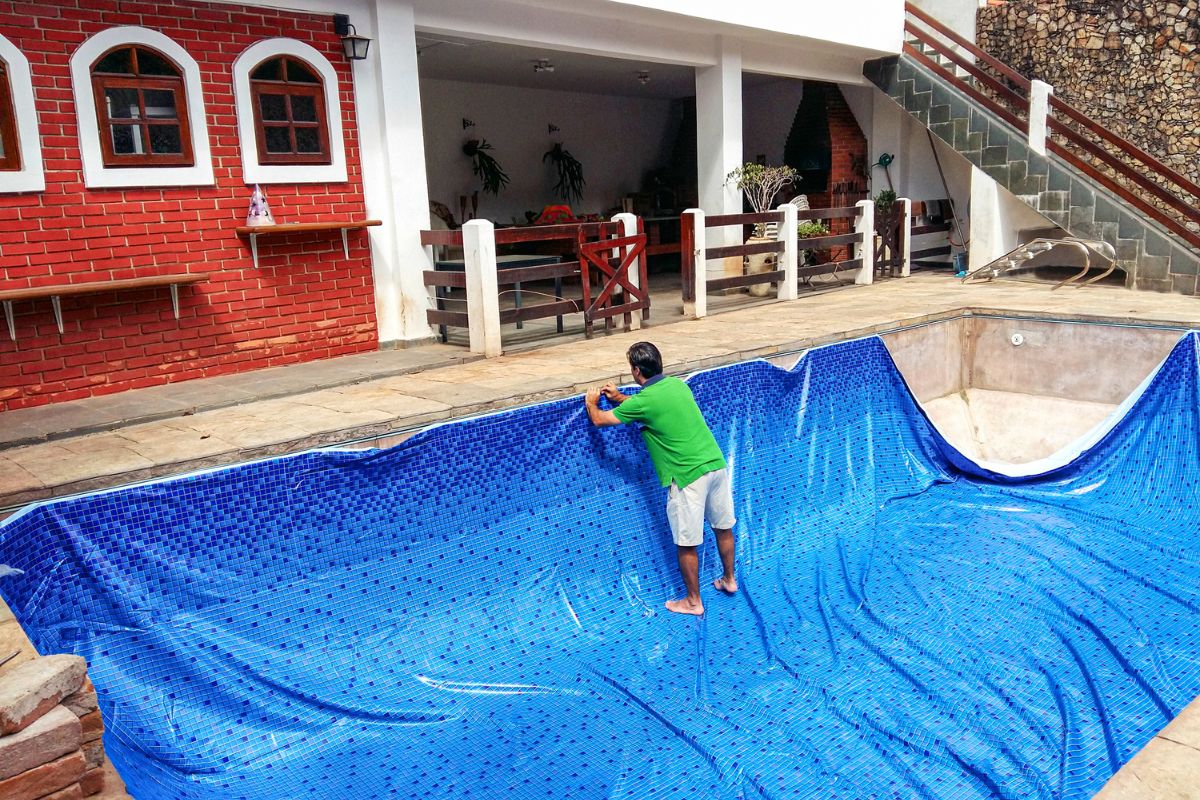Call Us TODAY: (417) 771-7552
How Do I Keep My Fiberglass Pool from Fading?

Fiberglass pools are known for their durability and smooth surface, making them an attractive option for many homeowners. However, exposure to the elements can cause fading over time, which diminishes their aesthetic appeal. If you’re wondering how to maintain that vibrant finish on your pool, you’ve come to the right place. In this blog, we’ll explore essential tips to help you prevent fading and keep your fiberglass pool looking brand new.
Maintain Proper Chemical Balance
One of the most common causes of fading in fiberglass pools is improper water chemistry. Ensuring that your pool’s pH, alkalinity, and chlorine levels are well-balanced is crucial for protecting the pool’s surface. If the water chemistry is off, it can degrade the gel coat over time, leading to dull or faded spots.
Regular Testing: Test your pool water weekly to ensure chemical levels are balanced.
Adjust as Needed: If your pH is too high or low, use pool chemicals to bring it back to the proper range, typically between 7.2 and 7.6.
Use Chlorine Carefully: While Chlorine is essential for sanitation, overuse can lead to discoloration. Stick to recommended levels to prevent damage to the gel coat.
Keeping the chemical balance in check will protect your pool’s appearance and extend its lifespan.
Minimize Direct Sun Exposure
Ultraviolet (UV) rays from the sun significantly contribute to pool fading. Continuous exposure to direct sunlight can weaken the gel coat over time, causing your pool’s vibrant color to lose its luster. To minimize this effect:
Install a Pool Cover: Cover your pool to block out harmful UV rays when it isn’t in use.
Add Shade Structures: Place umbrellas, pergolas, or other shade structures near your pool area. This can reduce the amount of direct sunlight hitting the pool’s surface.
Taking these steps preserves your pool’s color, keeps the water cooler, improves your swimming experience, and makes fiberglass pools installation in Missouri successful.
Clean the Pool Regularly
If left unchecked, debris and dirt accumulating on the surface of your pool can cause staining and accelerate fading. Regular cleaning helps maintain the vibrancy of your pool’s finish.
Use Soft Brushes: When scrubbing the pool walls and floor, opt for brushes designed for fiberglass pools to avoid scratches that might dull the surface.
Remove Leaves and Dirt: Use a pool net to remove any floating debris promptly.
Vacuum the Pool: A pool vacuum helps clean the bottom, preventing dirt buildup that could wear down the gel coat.
Keeping your pool clean ensures the surface remains in top condition, reducing the risk of fading.
Apply UV-Resistant Coatings
Consider applying a UV-resistant coating to your pool for an extra layer of protection. These coatings are designed to shield your pool from the sun’s harmful rays, extending the life of the gel coat.
Professional Application Recommended: These coatings should be applied by professionals to ensure proper coverage and effectiveness.
Reapply Periodically: Depending on the product, reapply every few years to maintain the protective barrier.
This added measure can significantly delay fading and keep your pool looking vibrant longer.
Avoid Using Harsh Cleaners
Avoid using abrasive or harsh chemical cleaners when cleaning your fiberglass pool. These cleaners can erode the gel coat and speed up fading. Instead, opt for pool-specific cleaners that are gentle on fiberglass.
Read Product Labels: Always check if a cleaner is safe for fiberglass surfaces.
Use Mild Detergents: A mix of mild detergent and water is often enough for regular cleaning.
Sticking to gentle cleaning products ensures your pool remains protected from unnecessary wear and tear.
Consider a Pool Renovation When Necessary
Consider professional refinishing or resurfacing if your fiberglass pool already shows signs of fading.
Gel Coat Refinishing: A new layer of gel coat can return the pool’s original color and luster.
Timely Repairs: Address any chips, cracks, or fading as soon as they appear to prevent further damage.
Renovating your pool revives its appearance and adds to its longevity, ensuring you can enjoy it for years.
Maintaining the vibrant color of your fiberglass pool is all about regular care and preventive measures. From balancing your pool’s chemicals to protecting it from harsh UV rays, following these simple steps can go a long way in keeping your pool looking as good as new. A little attention now can save you from costly repairs or resurfacing later.
Implementing these strategies allows you to enjoy your fiberglass pool for many summers without worrying about fading. If you consider fiberglass pools installation in Missouri, these tips will ensure your investment stays beautiful and functional for years.
Frequently Asked Questions
How long do fiberglass pools typically last before they start to fade?
Fiberglass pools are known for their durability and can last up to 25 years or more before showing signs of fading. The fading rate depends on water chemistry, sun exposure, and maintenance practices.
Can I repaint a fiberglass pool if the color fades significantly?
You can repaint a fiberglass pool, but it’s not a DIY job. A professional can apply a new gel coat or epoxy paint to restore the pool’s original color and finish, giving it a fresh, vibrant look.
Does saltwater contribute to fading in fiberglass pools?
Saltwater can accelerate fading if the pool’s gel coat isn’t properly maintained. While saltwater systems are generally less harsh than traditional chlorine, monitoring the water’s salt levels and chemistry to prevent damage over time is essential.
Will pool heaters cause fiberglass pool colors to fade faster?
Pool heaters do not directly cause fading, but extreme fluctuations in water temperature can stress the pool’s gel coat. Consistent water temperatures help maintain the pool’s surface integrity and prevent premature fading.
Are specific fiberglass pool colors more prone to fading?
Darker pool colors, such as deep blue or black, are more prone to visible fading due to UV exposure than lighter shades. If you’re concerned about long-term color retention, opting for a lighter pool finish may reduce the chances of noticeable fading.




